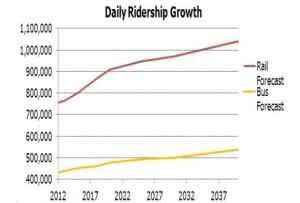by James A. Bacon
The Washington Metro system continues to crumble, as hundreds of riders found to their consternation Wednesday when a fire near the Anacostia Metro station stranded several Green Line trains underground for several hours. A rider named Scott posted an incredible first-person story on Unsuck DC Metro, describing getting stuck in a jam-packed train that coasted to a halt in a tunnel underneath the Anacostia River. As temperatures inside the cars rose to some 90 degrees, people took off coats and shirts. After an hour or two of waiting in the dark, some passengers broke windows; others exited the train and walked down the tunnel. Someone threw up. The cars stank of urine as people wet themselves.
Needless to say, after that experience, Scott was rethinking his commitment to Metro and public transportation.
The Washington Metropolitan Area Transportation Authority (WMATA) has long known it has a problem. And the standard response is, “We need more money.” Let us set aside the Washington Times‘ expose of endemic featherbedding and incompetence in the lower and middling ranks of Metro employees and take senior management at its word, that MWATA’s problem is mainly one of insufficient funds.
Let us also acknowledge that Metro is a critical piece of infrastructure that the Washington region, including Northern Virginia, cannot allow to deteriorate. As management points out in its draft Momentum Strategic Plan 2013-2025, without Metro, there would be one million more auto trips per day, traffic congestion would increase by 25 percent, and the region would have to invest tens of billions of dollars on new roads, bridges and parking facilities.
Over the next three decades the region is forecast to experience a 30% increase in population growth, and a 40% increase in rail ridership from 750,000 per day to 1.05 million per day. Metro needs to spend $1 billion a year on capital improvements just to maintain its current, sub-par level of service. To improve service, WMATA will need to invest $1.5 billion a year over the next decade. To deliver the transit system “that the region deserves” — the enterprise needs $2.25 billion a year. Note: That is over and above annual operating subsidies.
Metro has not identified where that money will come from. But it knows where to look: “Metro will work with regional and federal partners to develop a predictable funding source for transit,” states the strategic plan. Later, the document elaborates: “First, Metro must work to ensure it continues to receive the robust capital funding from its local, state and federal partners that it has in recent years. … Second, Metro must work with the region to find new mechanisms that could generate revenue for Metro.”
Watch out, Virginia, Metro is looking at you!
Remarkably, the strategic plan never mentions the idea of… raising fares. Anticipating a 40% growth in ridership, Metro is terrified by the prospect of being inundated with riders. To accommodate all that demand, it needs to spend more money from sources unknown. Economics 101 logic suggests that raising rates would do two things: (1) It would raise more money; (2) it would reduce the number of projected riders, hence reducing the need for capital improvements.
The Metro strategic plan never mentions the concept of “value capture” either. Interestingly, when touting the regional benefits of the rail service, the document notes that the presence of Metro stations increases the value of surrounding land. “The land around Metrorail stations generates $3.1 billion annually in property tax revenues to the jurisdictions. Of these revenues, $244 million of incremental property value is … extra value that would not exist without Metro.”
The idea behind “value capture” is that some of the economic value created by transit and highway improvements should be used to help finance those improvements — as Fairfax and Loudoun Counties are doing to a small degree to help finance the Rail-to-Dulles extension. Rather than dunning taxpayers generally, including those who don’t use Metro or, worse, in downstate Virginia who don’t even garner indirect benefits from Metro, commercial taxpayers who benefit from higher rents should be tapped to help pay to maintain the system that makes those higher rents possible.
But none of that is in the works. Here is what is in the works. Governor Bob McDonnell has proposed a massive tax restructuring plan that would increase spending on roads, bridges and rail projects by $2.4 billion over the next five years. Nearly $1.1 billion would go to rail and public transit. (See details.) Of that amount, $300 million would underwrite the expansion of Metrorail to Dulles airport and $500 million would be applied to other transit needs. It is not clear how much of that sum, if any, would defray WMATA’s capital costs.
Downstate Virginians need to pay attention. Typically, they focus only on the projects in their own back yards, paying no heed to what debacles may be occurring elsewhere in the state. WMATA, unwilling to tackle the endemic inefficiency of its unionized workforce and reluctant to raise fares in the face of projected increases in ridership, would much rather extract money through the political process. Downstaters need to make sure they don’t get fleeced.



